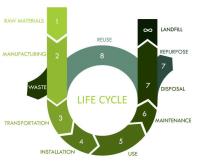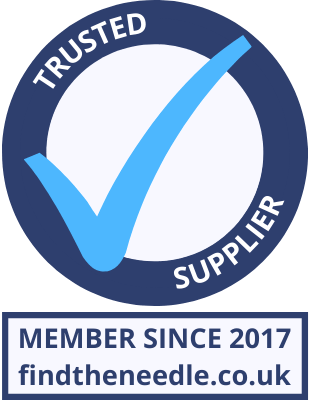 Add My Company
Add My Company
Sign In

The Sustainability Platform empowers us to build responsible supply chains, guarantee transparency and bring it to the customer. Never before has it been so easy to be sustainable and transparent. Our products are transformed into data. Data transformed into value.
Methodology
The traceability methodology includes the procedures that make it possible to know and validate the history, location, conditions and trajectory of a product along the value chain. Recording of value chain data classified by degree of coverage from point of sale to km 0, through 4 forms, for the validation and classification of data for the subsequent production of the results: Sustainability Index and Impact Measurement.
Stepping up Environmental Assessment
Resources input Materials and energy Emission output Air, water and soil.
What is assessed? Where does the data come from?
From cradle to gate BCOME's Impact Measurement evaluates the environmental impact of a product from the extraction of materials to manufacture, including the transport and packaging used, measuring the environmental impacts generated at each stage and aggregating them to obtain a final result based on the ISO 14044 standard. The objective is to obtain a better understanding of the environmental impact, in relation to the emissions emitted, eutrophication, water consumption and waste management at each of the stages considered.
Through the BCOME database, we are able to provide our customers with quality data quickly and safely. The BCOME Database* is a private sector database that brings together more than 5,000 aggregate data from the textile and footwear sector. BCOME validates, classifies and verifies each of the sectoral data in its database in units of mass (kg).
Stepping up Sustainability Transformation
The methodology of the sustainability index includes procedures that make it possible to evaluate the degree of sustainability of a product from four areas of impact: planet, people, transparency and circularity. It is built from a 360º vision of sustainability, understanding that behind each product there is a universe of development and processes with environmental, social, economic and ethical implications, and that they must be treated with equal importance.
Stepping up connection with the consumer in a simple and understandable way
This is a tool for the interpretation and graphical representation of the results to obtain a connection of the physical product with a digital experience through e-commerce integration and/or smart labelling. Through this index system we are able to display valuable information for PLANET, PEOPLE, TRANSPARENCY and CIRCULARITY.
The intelligent QR Code system validates and displays this information!
Know the story behind the products.
Value Chain Traceability
Monitoring, defining and scoping the components of the value chain from km 0 to point of sale and their conditions through data collection.
Sustainability Index
Rating of the environmental, social and ethical performance of a product according to its best sustainable initiatives along its value chain.
Life Cycle Analysis (LCA)
Assessment of the environmental impact of a product, process or system throughout the stages of its life cycle.
System Assumptions and Boundaries
The calculation system multiplies each associated impact by the weight of the product at each life cycle stage according to the set targets, assumptions and thresholds. Due to the nature and complexity of the apparel supply chain, the following detailed assumptions, thresholds and targets per life cycle stage, detailed by life cycle stage, are included:
Raw materials: Extraction of raw material and energy inputs from the environment.
Materials / Wet Processes: Activities necessary to convert raw materials and energy into the desired material.
Manufacture: Activities necessary to convert materials and energy into the desired product.
Retail: Activities necessary in the phase of buying and selling the product to the end customer. (on demand)
Use: Activities arising from the use of the finished product throughout its useful life. (on demand)
End of use: Final destination and emissions when the product and packaging reach end of life. (on demand)
Request the complete Sustainability and QR codes by writing to us: service@wearekingly.com
Read more:
Who said “Cradle to Grave"?
Churchill, the leader of the Conservative Party, coined the phrase 'from the Cradle to the Grave' in a radio broadcast in March 1943 to describe the need for some form of social insurance to give security to every class of citizen in the state.
In its simplest form Cradle to Grave means from creation to disposal throughout the life cycle.
A life cycle assessment, or LCA, identifies opportunities for improvement by quantifying the impacts that a product has on the environment throughout its full life cycle – from production and manufacturing to the disposal phase.
A full LCA is also known as a “Cradle to Grave” sustainability assessment.
The aim is to create befitting products, establish two-way communications, and practice appropriate promotions to maximize sales to customers at each phase of life.
Cradle-to-grave is the full life cycle assessment from resource extraction ('cradle') to the use phase and disposal phase ('grave'). Cradle-to-gate is an assessment of a partial product life cycle from resource extraction (cradle) to the factory gate (i.e., before it is transported to the consumer).
Why the Cradle to Grave principle?
Cradle to Grave
What is the first thing that you think about when you hear the term cradle to grave? The cradle is where you start life, and, of course, the grave is where you end it. In business, the term cradle to grave is used in reference to a firm's perspective on the environmental impact created by their products or activities from the beginning of its life cycle to its end or disposal.
What is meant by the Cradle to Grave principle?
This term is best understood when referred to as “From creation to disposal”.
The best route to determine your cradle to grave is to establish a life cycle of the Organizational processes. Only once you have narrowed down your process will you be able to see precisely what waste streams you have within your Organization. Each waste stream will have a different cradle to grave and this is where the Organization can implement:
· Proper identification of each risk.
· Necessary handling procedures and,
· Correct storage requirements.
The main goal of cradle to grave is to assist an Organization to determine whether the waste stream can be recycled, perhaps even re-used as the last resort will be landfill/disposal.
Kingly are well equipped to follow a cradle to grave scenario through the ISO 14001:2015 standard. This ensures all waste streams are treated with the necessary respect and that we are utilizing the cradle to grave process to optimize ecological and social benefits.
The life cycles of ISO 14001:2015 are broken up into life cycle perspective, life cycle stages, and life cycle assessments.
When applying a life cycle perspective to its products and services, we always consider the following:
· The stage in the life cycle of the product or service.
· The degree of control it has over the life cycle stages, e.g., a product designer may be responsible for raw material selection, whereas a manufacturer may only be responsible for reducing raw material use and minimizing process waste and the user may only be responsible for use and disposal of the product.
· The degree of influence it has over the life cycle, e.g., the designer may only influence the manufacturers production methods, whereas the manufacturer my also influence the design and the way the product is used or its method of disposal.
· The life of the product.
· The organization’s influence on the supply chain.
· The length of the supply chain
· The technological complexity of the product.
We consider those stages in the life cycle over which it has the greatest control or influence as these may offer the greatest opportunity to reduce resource use and minimize pollution or waste.
Illustration of the general phases of a life-cycle assessment, as described by ISO 14040.
For more information on Sustainability intelligence and trusted technology in one place talk to KINGLY LTD
Enquire Now
List your company on FindTheNeedle.

